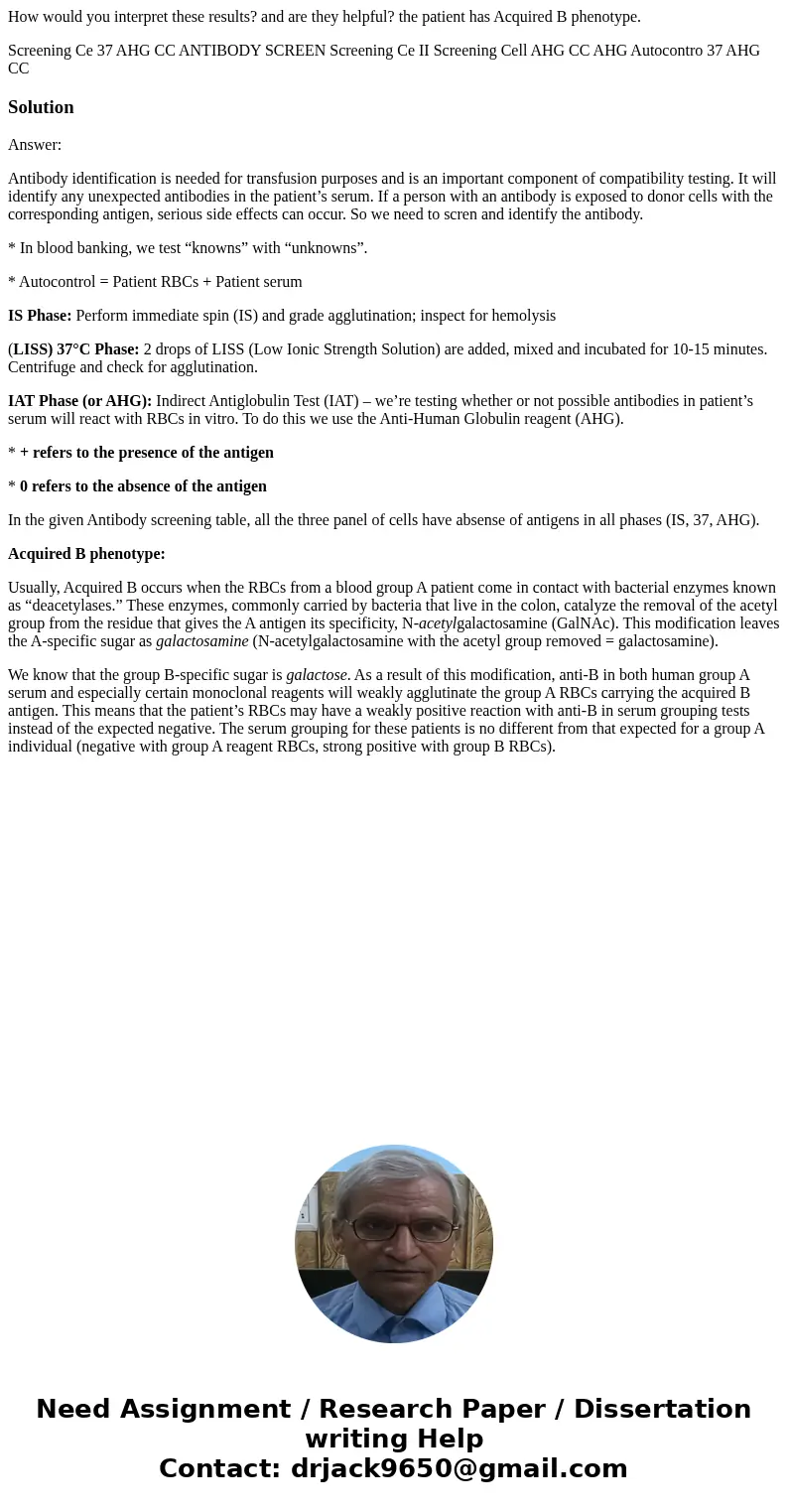How would you interpret these results and are they helpful t
How would you interpret these results? and are they helpful? the patient has Acquired B phenotype.
Screening Ce 37 AHG CC ANTIBODY SCREEN Screening Ce II Screening Cell AHG CC AHG Autocontro 37 AHG CCSolution
Answer:
Antibody identification is needed for transfusion purposes and is an important component of compatibility testing. It will identify any unexpected antibodies in the patient’s serum. If a person with an antibody is exposed to donor cells with the corresponding antigen, serious side effects can occur. So we need to scren and identify the antibody.
* In blood banking, we test “knowns” with “unknowns”.
* Autocontrol = Patient RBCs + Patient serum
IS Phase: Perform immediate spin (IS) and grade agglutination; inspect for hemolysis
(LISS) 37°C Phase: 2 drops of LISS (Low Ionic Strength Solution) are added, mixed and incubated for 10-15 minutes. Centrifuge and check for agglutination.
IAT Phase (or AHG): Indirect Antiglobulin Test (IAT) – we’re testing whether or not possible antibodies in patient’s serum will react with RBCs in vitro. To do this we use the Anti-Human Globulin reagent (AHG).
* + refers to the presence of the antigen
* 0 refers to the absence of the antigen
In the given Antibody screening table, all the three panel of cells have absense of antigens in all phases (IS, 37, AHG).
Acquired B phenotype:
Usually, Acquired B occurs when the RBCs from a blood group A patient come in contact with bacterial enzymes known as “deacetylases.” These enzymes, commonly carried by bacteria that live in the colon, catalyze the removal of the acetyl group from the residue that gives the A antigen its specificity, N-acetylgalactosamine (GalNAc). This modification leaves the A-specific sugar as galactosamine (N-acetylgalactosamine with the acetyl group removed = galactosamine).
We know that the group B-specific sugar is galactose. As a result of this modification, anti-B in both human group A serum and especially certain monoclonal reagents will weakly agglutinate the group A RBCs carrying the acquired B antigen. This means that the patient’s RBCs may have a weakly positive reaction with anti-B in serum grouping tests instead of the expected negative. The serum grouping for these patients is no different from that expected for a group A individual (negative with group A reagent RBCs, strong positive with group B RBCs).

 Homework Sourse
Homework Sourse